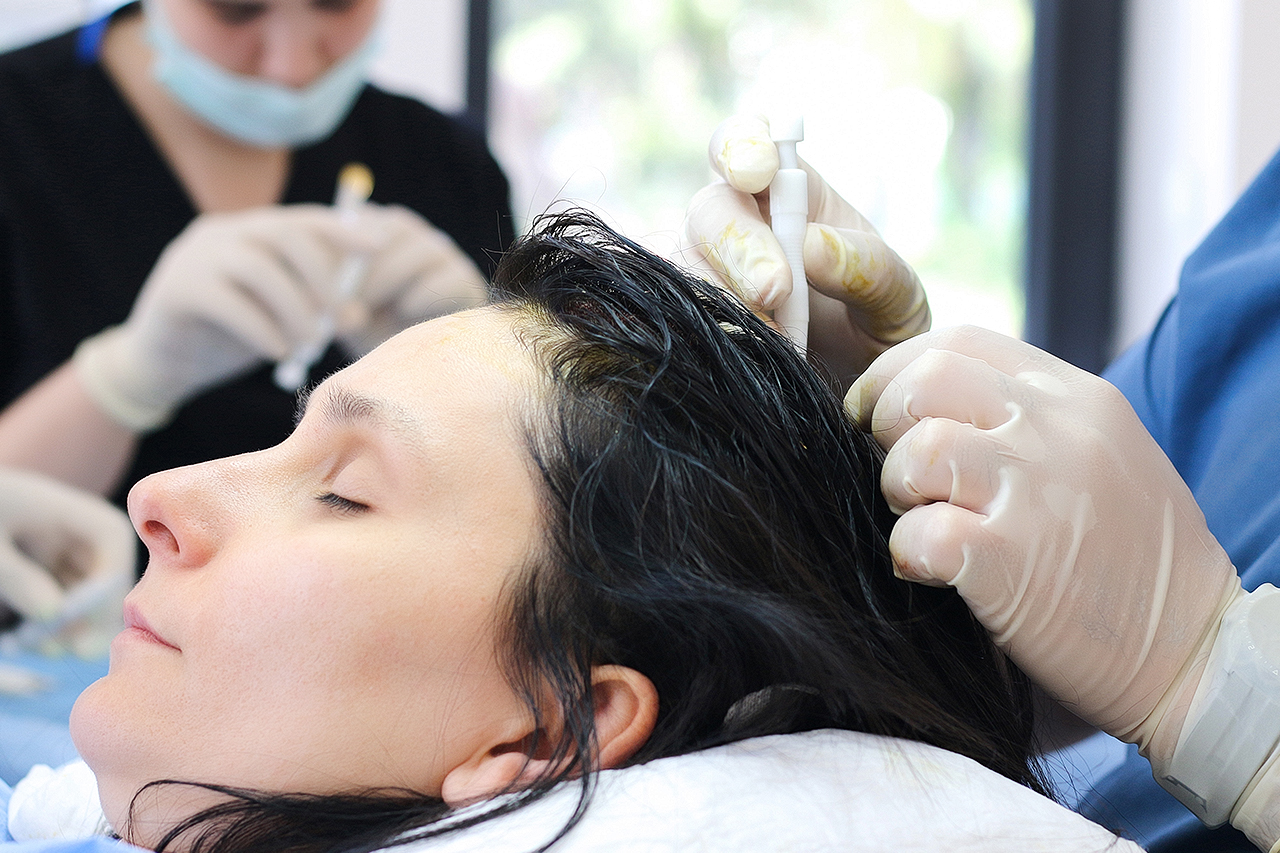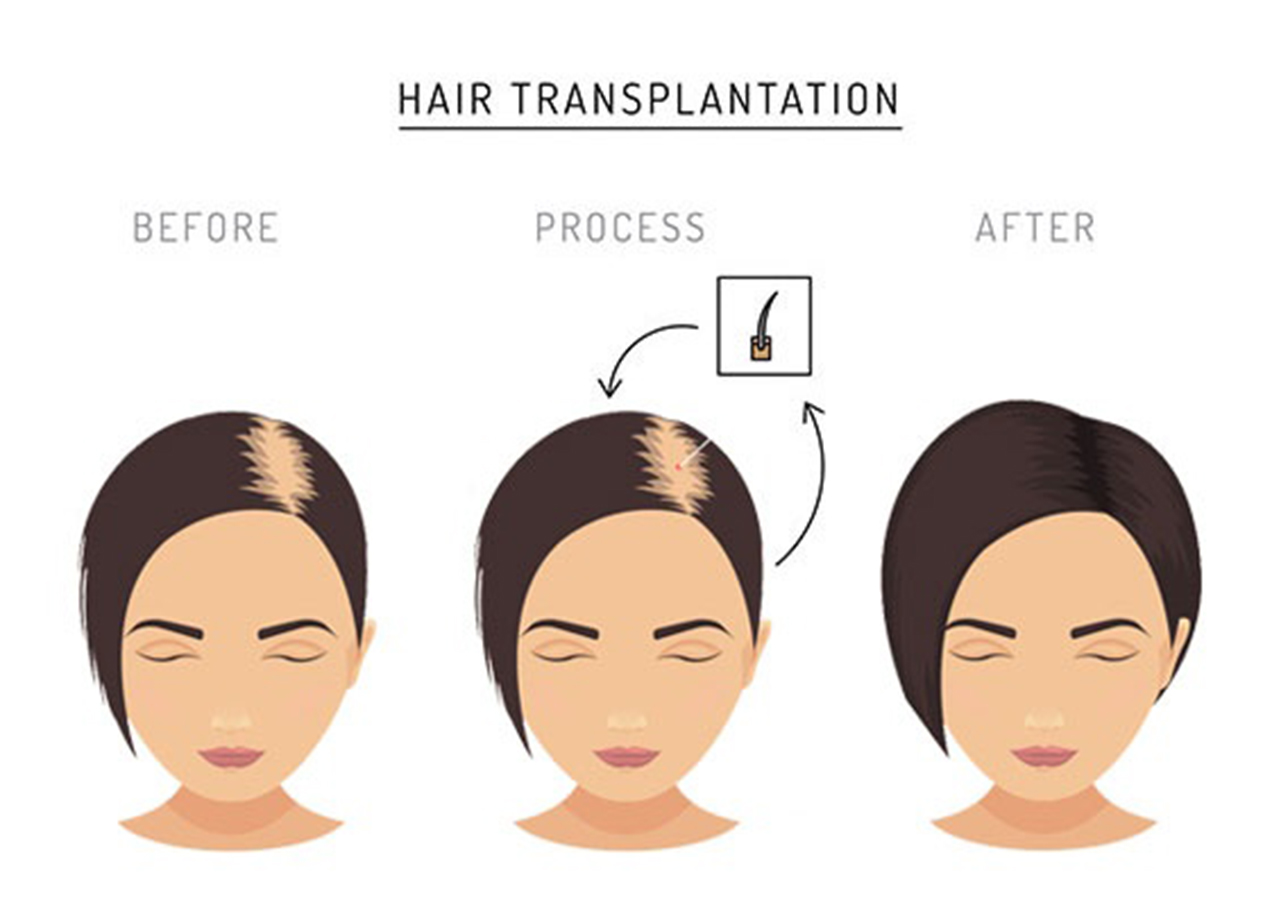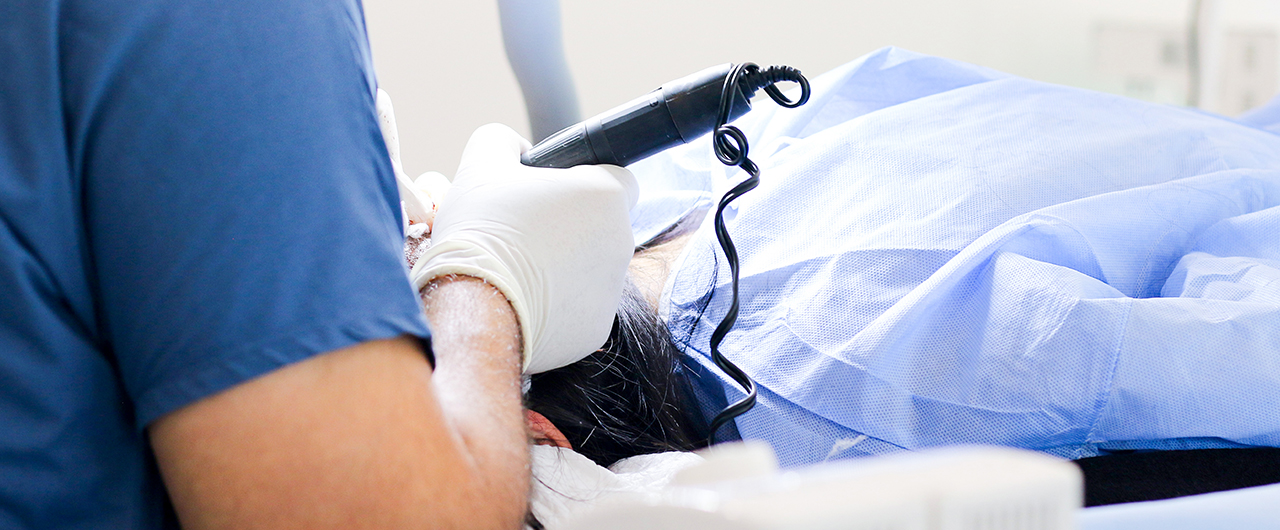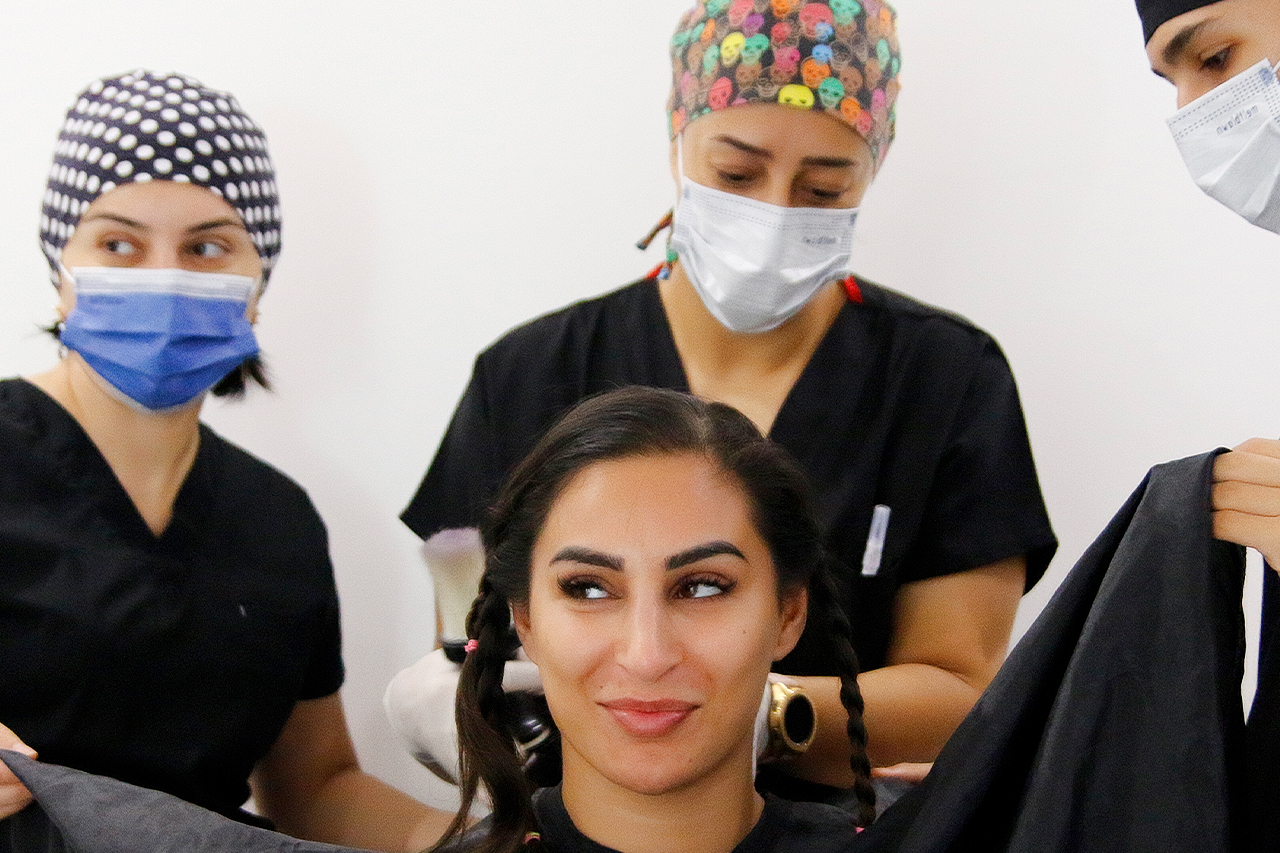What is Women’s Hair Transplantation?
Women’s Hair Transplantation involves transplanting hair follicles from the back or sides of the head to bald or thinning areas. This technique may help women with hereditary, age, hormonal, or other hair loss grow hair again. Transplanted hair grows normally and needs the same washing and style as natural hair.

Can female hair loss be treated?
Female hair loss is curable. Drugs, diet changes, and surgery may treat female hair loss. The best therapy depends on a woman’s medical history, hair type, and hair loss cause. Female hair loss treatments include minoxidil, finasteride, and hormone therapy. Dietary changes, stress reduction, and avoiding harmful hairstyles and treatments may enhance hair health. Hair Transplants may be an option for ladies with severe hair loss.

Can females do Hair Transplantation?
Women can transplant hair. Hair Transplantation helps men and women regrow hair. Men and women lose hair equally. The procedure’s efficacy and approach may vary for men and women according to hair loss trends and hair types. A Hair Transplant professional can help a woman decide what to do.
What are the advantages of Women’s Hair Transplantation in Turkey?
Turkey’s Women’s Hair Transplantation benefits:
- Cost-effectiveness: Turkey is a cheaper alternative for Hair Transplantation than other nations.
- Skilled surgeons: Turkey has several skilled Hair Transplant doctors who use cutting-edge technologies.
- Superior technology: Turkey uses cutting-edge Hair Transplantation equipment and methods for better outcomes.
- Good success rate: Many Turkish Hair Transplant patients claim natural-looking outcomes.
- Easy location: Turkey is a famous tourist destination, making Hair Transplantation simple to combine with a trip.

What are the Women’s Hair Transplantation options in Turkey?
Turkish Women’s Hair Transplantation possibilities include:
Follicular Unit Transplantation (FUT): The “strip approach” entails taking a strip of hair from the back of the head and transplanting it.
Follicular Unit Extraction (FUE): Individual hair follicles are extracted from the back of the head and transplanted. FUT is more intrusive and leaves scars.
Direct Hair Implantation (DHI):Follicles are implanted into the scalp without incisions.
Bio-FUE: FUE with Plasmolifting treatment. Plasmolifting helps transplanted hair grow and survive.
Mesotherapy: Vitamin, mineral, and nutrient injections into the scalp stimulate hair growth and thickness.
The patient’s requirements, hair loss, and surgeon’s suggestion determine the approach. To choose the best choice for your circumstance, consult a specialist.
Who is a good candidate for Women’s Hair Transplantation?
Someone who:
- Has hair loss: Women with hair loss or thinning hair may benefit from the surgery.
- Has healthy hair: Women with healthy hair and a nice scalp have a higher transplant success rate.
- Has a reasonable expectation: Women with realistic transplant expectations are more delighted with the outcomes.
- Good candidates are healthy women without medical issues that might influence the transplant.
- Has finished hair loss treatment: Women who have taken minoxidil or finasteride may be better candidates for the operation.
To discover whether Women’s Hair Transplantation is right for you, talk to a specialist.
What should be done before Women’s Hair Transplantation?
Do these measures before Women’s Hair Transplantation:
- Talk with a professional: Meet with a Hair Transplant surgeon to discuss the operation and decide whether you are a suitable candidate.
- Smoking slows recovery and increases problems. Stop smoking two weeks before and after the surgery.
- Avoid blood-thinning medications: Aspirin and ibuprofen might cause bleeding. Avoid these drugs for two weeks before the operation.
- Transportation: The procedure’s anaesthetic might impair driving, so organise for transportation to and from the clinic.
- Prepare for recovery: Following post-operative care guidelines for Women’s Hair Transplantation is crucial. Avoiding vigorous activity, shampooing the scalp, and taking medicine as advised may help.
- Set reasonable expectations: Women’s Hair Transplantation takes time to show results, so be patient.
To maximise results, follow the surgeon’s preoperative recommendations.

How is Women’s Hair Transplantation performed?
Women’s Hair Transplantation usually involves these steps:
- Preparation: The patient’s scalp is cleansed and numbed.
- Harvesting: The surgeon next removes healthy donor hair follicles (typically the back or sides of the head). FUT (strip technique) or FUE may achieve this (individual follicle extraction).
- Graft preparation: Hair follicles are separated into one-to-four-hair grafts for transplantation.
- Transplantation: The surgeon implants the Hair Transplants using a tiny needle (the area where hair is thinning or balding). FUT, FUE, or DHI are usually used.
- Following the treatment, the patient is instructed to wash the scalp, take medicines, and avoid intense exercise.
Depending on hair loss and graft quantity, the surgery might take several hours. To get the greatest results, hire a skilled surgeon.
Women’s Hair Transplantation growth timeline
This is a broad schedule of what you might anticipate, however the growth timeframe for Women’s Hair Transplantation can vary from person to person: During this period, the transplant’s full effects will become clear.
- Initial 2–3 weeks: The transplanted hair may start to come out at this period, when the follicles enter a dormant stage. This is a typical aspect of healing and shouldn’t be reason for concern.
- 3–4 months: New hair growth ought to start to show after 3–4 months. At first, the hair will be extremely fine and scarcely noticeable, but it will eventually thicken.
- 6–12 months: The transplanted hair should have fully grown by 6–12 months following the treatment, with observable increases in density and thickness.
- 1–2 years: The hair will proceed to develop and thicken throughout this time.

How long does Women’s Hair Transplantation take in Turkey?
Turkey’s Women’s Hair Transplantation time depends on hair loss and graft number. The process might take hours. The operation usually takes one session, although some patients may need numerous treatments. To prepare beforehand, talk to your surgeon about the procedure’s projected duration.
How long does Women’s Hair Transplantation last?
Women’s Hair Transplantation is permanent. Hair follicles from genetically resistant scalp regions are transplanted to thinning or balding areas. After transplantation, hair follicles will thrive for life. Yet, normal ageing or other reasons may thin scalp hair over time. To get the greatest results and safeguard the transplanted hair follicles, follow post-op recommendations.
What should be done after Women’s Hair Transplantation treatment?
Follow your doctor’s recommendations for post-operative care after a Women’s Hair Transplantation to encourage maximum recovery and guarantee the greatest outcomes. You could be told to do some of the following:
- Taking medications: To relieve discomfort and lower the risk of infection, you may be given antibiotics and painkillers.
- Protecting the scalp: Your doctor might recommend that you cover the transplanted spot with a bandage or other specific treatment for a few days following the surgery. Additionally, you might need to use a certain shampoo as instructed or refrain from washing your hair for a particular period of time. Avoiding physical activity will help to reduce the risk of bleeding and edema in the days after the surgery. This includes avoiding exercise and heavy lifting.
- Avoiding the sun: To lower the chance of skin irritation and discoloration, you should stay out of the sun and severe temperatures for the first few weeks following the surgery.
- Managing edema: After a Hair Transplantation, there may be some swelling of the face and scalp, but this should go down within a few days to a week. By using cold packs and sleeping with your head elevated, you can lessen swelling.
- Taking care of the transplanted hair: For the first few weeks following the operation, you should refrain from brushing or combing the transplanted hair. You should also follow your doctor’s advice for hair washing and style.
